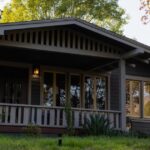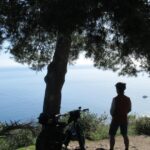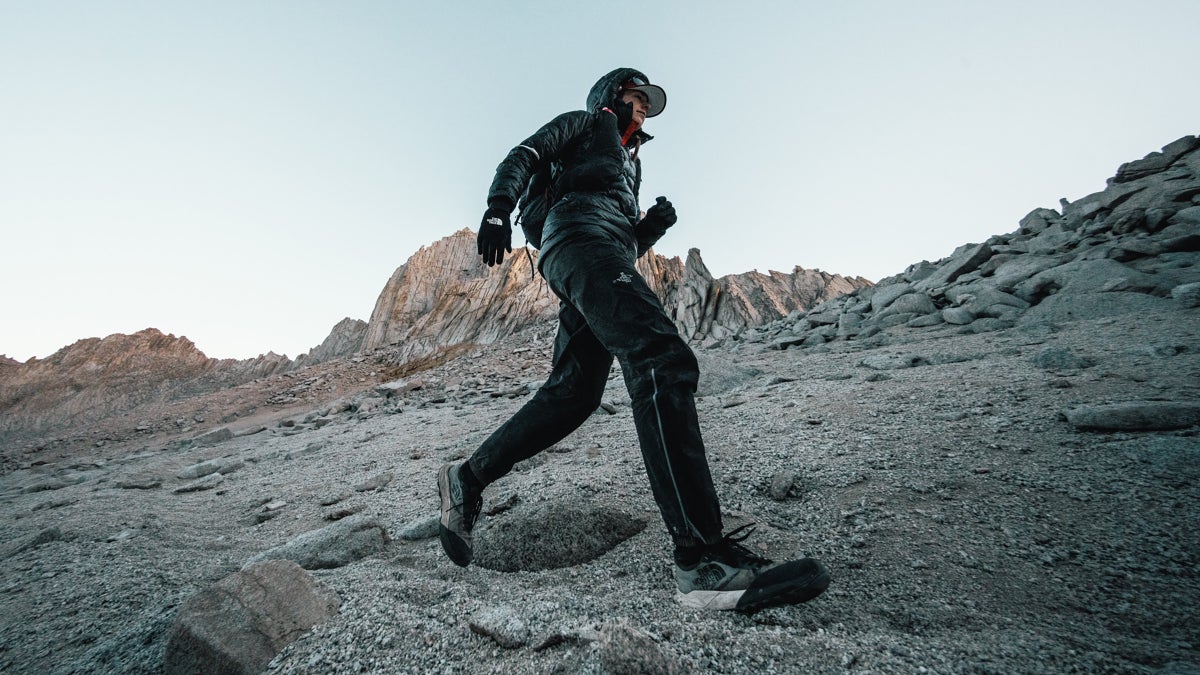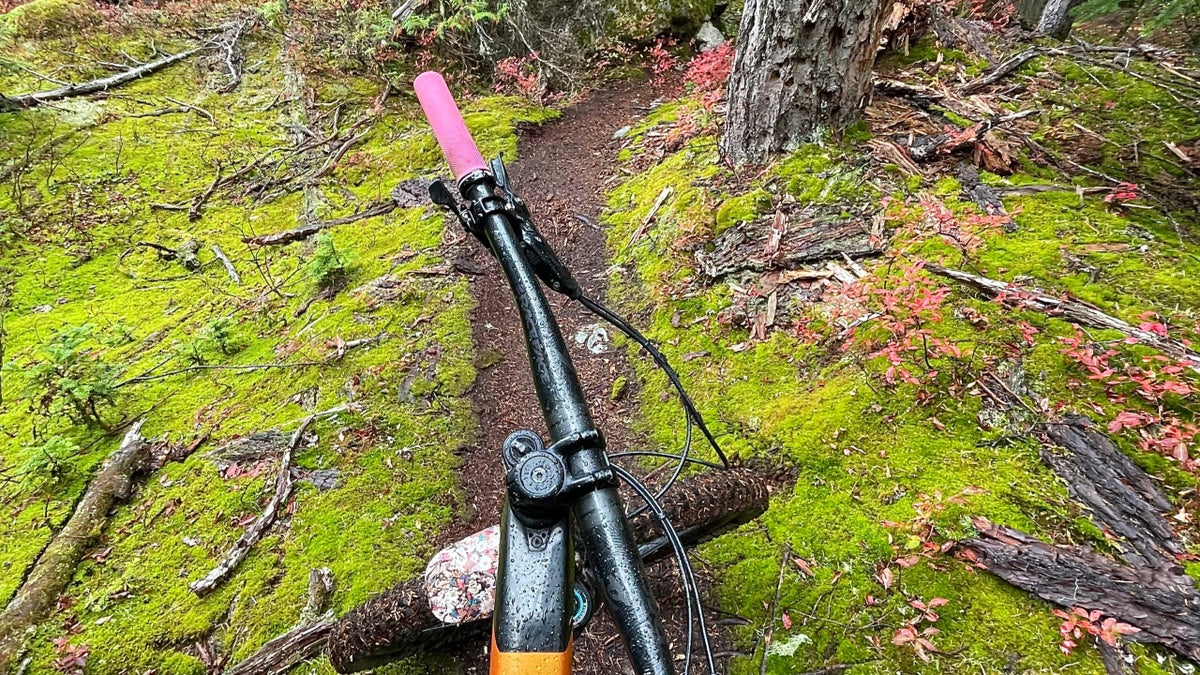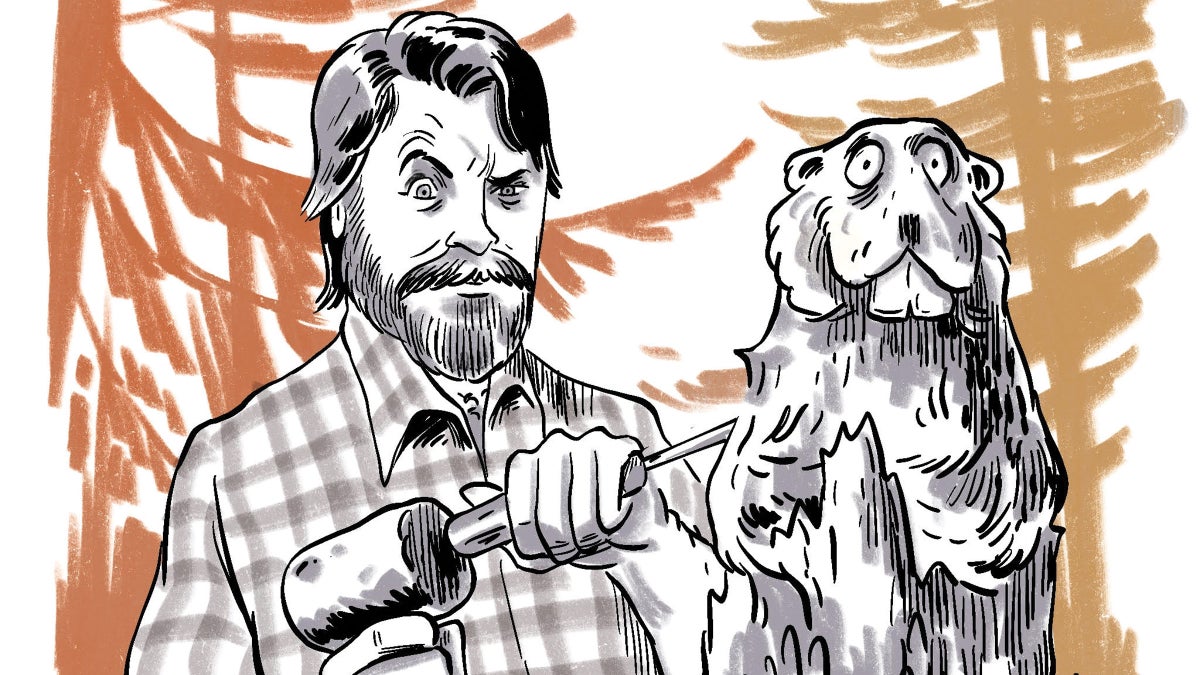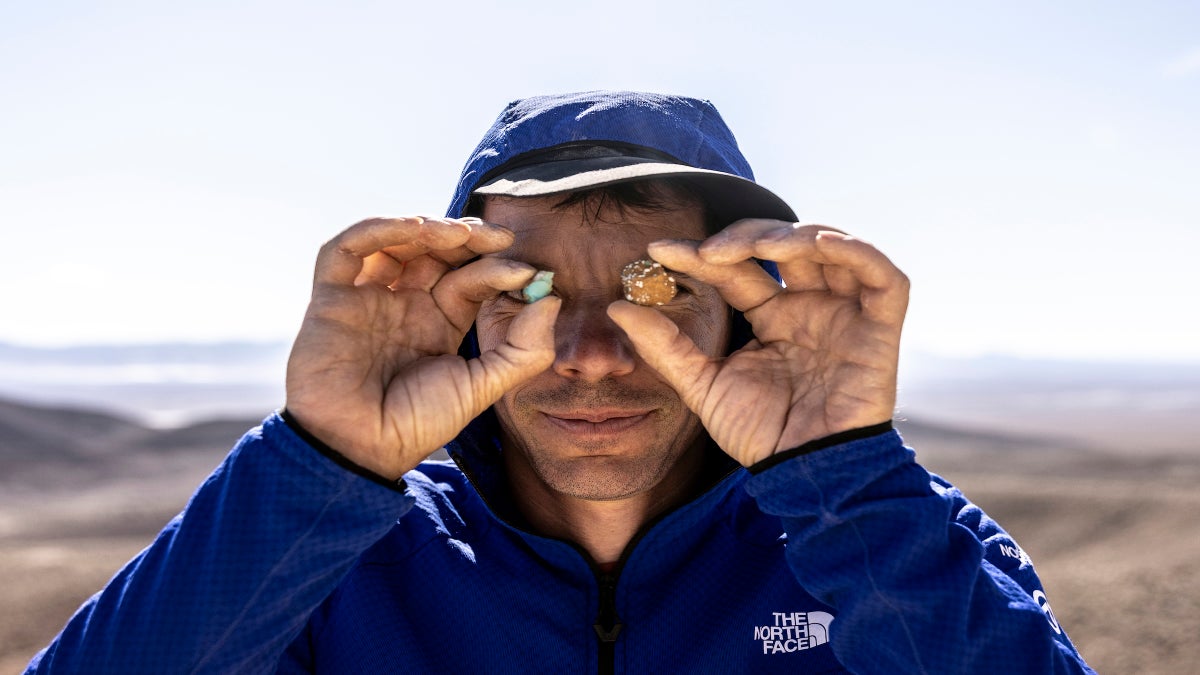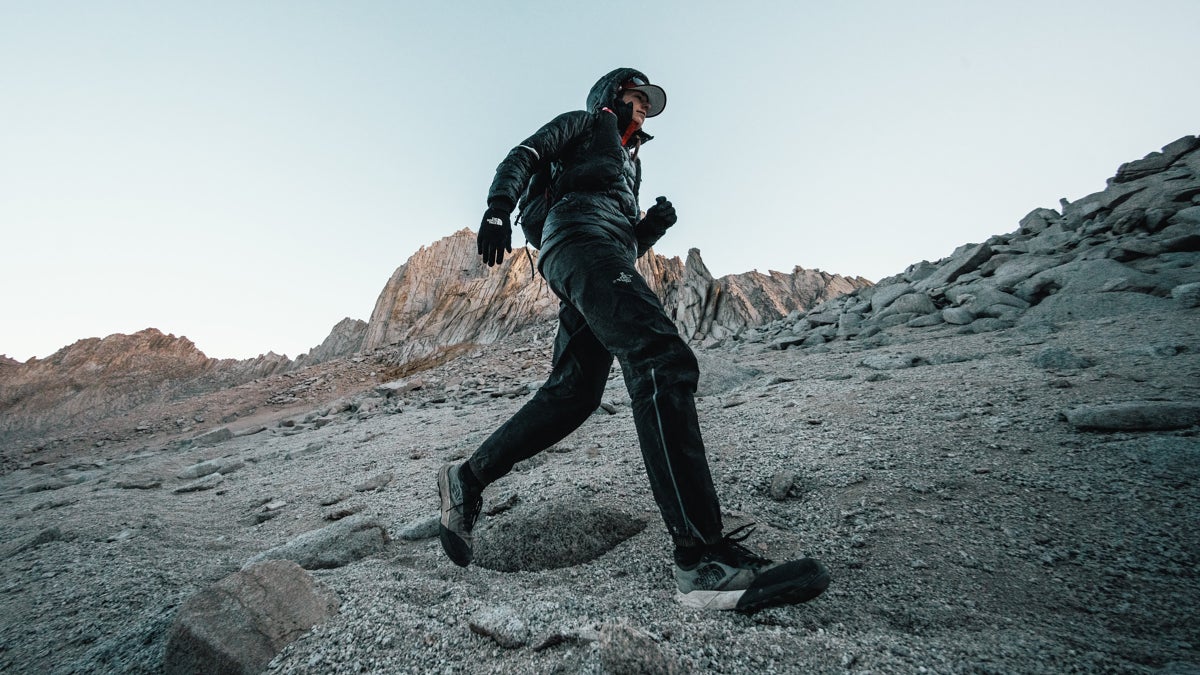
In September, ultrarunner Olivia Amber set the Fastest Known Time for a supported trek on California’s Norman’s 13, a grueling 107-mile link-up of the state’s highest peaks. Amber, 30, completed the trip in 89 hours. She carried her gear and food, and had several pacers help her along the journey.
My lowest point came during my slog up 14,018-foot Middle Palisade Peak. It was horrendous, and climbing the peak via the Farquhar Route, the rarely-climbed line I had to use, is an experience I wouldn’t wish on anyone. It’s loose, exposed, steep, and just plain sucks.
When I made it to the summit, the bummer continued. My gut revolted. I couldn’t keep food down, and was dry heaving constantly. My energy waned, but I kept pushing toward 14,064-foot Split Mountain. It was dark, windy, and freezing cold, and all I wanted was to bust out my emergency blanket and lie down for half an hour, but I knew stopping in these conditions wouldn’t do anything except drain my energy more.
I needed to keep going.
I first heard about Norman’s 13 five years ago. Dreamed up by Andy Gohlich, the 100-plus-mile backcountry route connects all 13 of the 14,000-foot peaks in California’s Sierra Nevada in a single, nonstop push.
I’m an ultrarunner, but I couldn’t imagine a point in my life where I wouldn’t be terrified of this. It wasn’t just a 24-hour day; it was three of them, back-to-back, and then some, moving across undulating fields of scree, through labyrinths of elephantine talus, and along knife-edge ridge lines, where a single mistake could be fatal.
You didn’t just have to keep moving; you had to stay sharp, too.
I was obsessed with the idea that someday, if I took my time, dialed each section, and pieced it all together, I could take this gargantuan, technical route down.
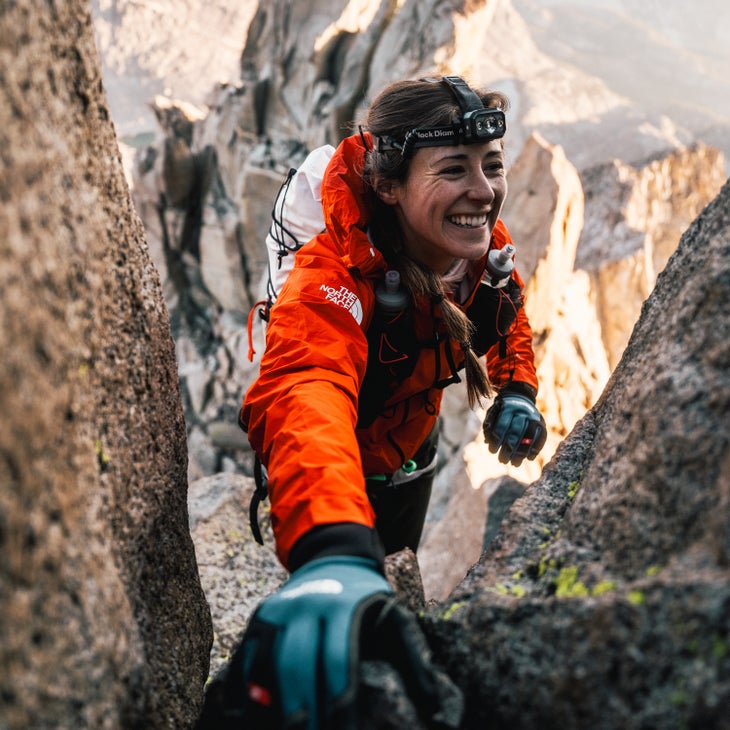
By the time I hit the trailhead on September 6, I knew I could do it, but variables remained. Would wildfire smoke or weather shut me down? Would my own health—after a recent surgery for stage 4 endometriosis—throw a wrench into my plans? I was about to find out.
I started in the dark, and reached the summit of 14,009-foot Thunderbolt Peak, the first mountain, at sunrise. The traverse from Thunderbolt to 14,159-foot Mount Sill tags three other 14,000-foot peaks en route. On paper, it’s the hardest part of Norman’s, some sections involve rappelling and technical rock climbing, but it’s short: barely two miles. The climbing came easily. I flowed along the ridge, barely using my rope, and finishing without a scratch.
Looking south at the vast basins, peaks, and ridgelines of the Sierra. I knew exactly what lay ahead, because I’d covered all of this terrain, in bits and pieces, before. I’d have to tackle seven other mountains and 95 miles before I’d ever see a trailhead again.
Holy shit. I still had so much to go.
That’s when I hit my low point, as I headed up Middle Palisade and experienced the gut problems on the way to Split. I summited Split at 4:20 A.M. on my second day, amid a fierce wind. I was falling asleep on my feet. I retraced my steps off the summit down to the meadow below, but by this point, I’d been moving for over 24 hours. I lay down on the ground and slept for a few minutes. The sun rose.
The roughly 45-mile stretch to the next peak, Tyndall, followed the John Muir Trail. It was a long haul, but a good time to recharge. I linked up with a pacer, refueled, and we pushed on together. My stomach still hadn’t recovered—it never really did, I spent most of this day shitting my guts out—but by sunrise on my third day, I was at Forester Pass, around 65 miles through the route. I scrambled up the slabs of Tyndall and then bagged the neighboring summit, 14,380-foot Williamson, which was a welcome confidence boost.
Soon, I could see the last peaks: 14,094-foot Russell, 14,505-foot Mount Whitney, 14,018-foot Mount Muir and 14,032-foot Mount Langley I still had so far to go, but the end was on the horizon. But it was getting dark, and visibility was bad. I picked my way through weird chutes and loose talus, up and down steep terrain, and around cliff bands. Before long, I saw headlamps in the distance. I knew exactly who they were. It was two of my friends, who had come out to support me. Who else would be out here in the middle of the night?
We met and hiked together to the base of Russell. Temperatures were in the teens, and a nearby lake had frozen solid, but my friends had brought a sleeping bag and a stove, and I slept for an hour and a half, my longest sleep during the nearly 90 hours. By sunrise, I was on top of Russell. Whitney and Muir were a stone’s throw away, but even Whitney’s Mountaineer’s Route, which I’ve done a million times, felt hard. I hit the summit of Whitney—a culture shock with so many people—and then quickly tagged Muir.
Then I was struck by a weird, bittersweet feeling. I only had one peak left, but I didn’t want the experience to end. As rough as it was, I could not think of a better place to be, and I began feeling immense gratitude for the ability to be out there, doing what I was doing.
The health struggles I’ve had in the past few years have taught me a lot of lessons. One is that self-induced suffering is much different than suffering that you don’t choose. I was suffering, sure, but it was a privilege to be out here pushing myself on my own terms.
Coming off Muir, I got my wish, in a way. A route-finding error cost me at least an hour. Maybe, subconsciously, I didn’t want the mission to end. Maybe I was just so tired that I was fumbling.
When I hit the summit plateau of Langley, I ran into a herd of bighorn sheep. It was an emotional moment. They all were watching me, and it almost seemed like they were waiting for me, like they understood what I’d been through. On the summit, I met all my friends, who had come out to run with me from Langley to the trailhead. In a way, the journey was over at this point, because even though I still had to run almost ten miles downhill to finish, all my friends would be with me. It felt like the perfect ending, a reflection of how I love to live. I enjoy being on my own, pushing myself in the mountains, but I also love sharing those experiences with the people I love. Here, I had the best of both worlds.
I popped a bottle of champagne, told myself I wasn’t going to drink any, and then took a sip anyway. Then we ran to the trailhead, where my parents were waiting. I celebrated a little bit, tried to eat, and fell asleep.
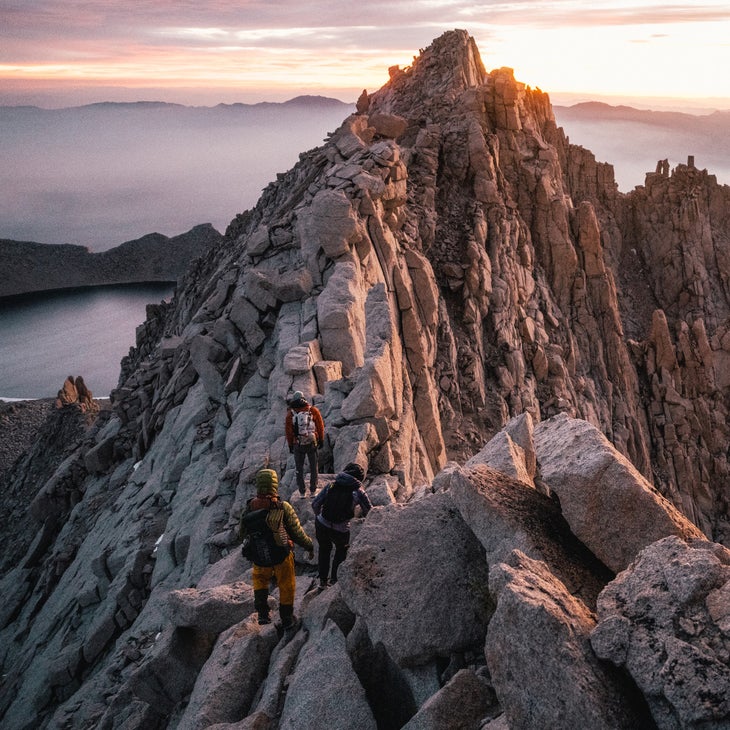
Done. 105 miles and 40,453 feet of gain in 89:47:41.
Normally, when I finish a big objective, I’m elated. But here, I felt a surreal and overwhelming sense of nostalgia. Not nostalgia for the experience, but for the dream that came before it. Because before I even knew this route existed, I’d always hoped to do something like it.
Now, there was an irrevocable shift in energy from what could be—from a sense of curiosity and awe in the face of the unknown—to what had been. OK, that’s over. I know what that’s like now. I’ve banked Norman’s as a loving memory, and I could always do it again, but I’ll never again get to have the experience of dreaming about it, of wondering if it was possible for me.
I do believe the route can be done in under three days, and maybe I’ll give it another shot someday. For now, I want to carry the lessons it taught me into new experiences and goals.
The biggest lesson? If you want to accomplish something huge and scary and intimidating, break it down. If you practice in bits and pieces, long and hard enough, eventually you’ll start to believe in yourself. And once you’ve gone from being afraid to even start trying something to believing you can finish it, you’re as ready as you’ll ever be.
At that point, you may as well just try.
The post What It’s Like to Climb California’s Highest Peaks in a Continuous 89-Hour Push appeared first on Outside Online.




